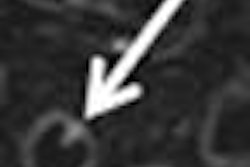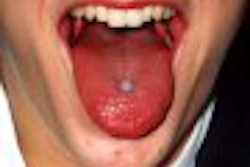It's not due to asbestos, PCBs or even toxic mold, but day in and day out your MRI suite may be getting more and more contaminated. The good news is that it's only magnetic contamination, and is at such low levels that it won't present the risks associated with high-field sources. The bad news is that it may be making your magnet room a no-man's land for other medical equipment in the future.
Many facilities have learned the hard way that their MRI has magnetized the steel near the magnet room. Learning this after installing a new PET or CT scanner in a former magnet room is too late. Knowing your risks and options before decommissioning an MRI will help you avoid major operational and financial costs.
PET and CT scanners, as well as multimodality scanners, some nuclear medicine devices, and lots of computerized office equipment react badly to the presence of magnetic fields, some even at field strengths at, or even below, 1 gauss. Some former magnet rooms are so heavily magnetized that even personal computers develop problems after a short exposure! When this happens, the room originally built to accommodate a million-dollar piece of equipment is good for only paper records storage.
But once the magnet is ramped-down and moved out of the building, the problem is gone, right?
Wrong. Consistent exposure to high-strength magnetic fields will turn any ferrous object into a permanent magnet. Running an MRI 24 hours a day for years, if not decades, provides a perfect opportunity for objects near the magnet to become permanently magnetized.
All you really need to have in order to magnetize a structure is a high-strength magnet and ferrous material. MRI's are the magnet, and, unfortunately, there's no shortage of ferrous material -- steel -- in most contemporary buildings. Whether it is a steel-framed building or rebar in your concrete floor, iron or steel piping near the magnet, or even steel plating installed to passively shield an MRI, all steel exposed to high-strength magnetic fields will, over time, become permanently magnetized.
Because of their very large field, unshielded superconducting magnets have historically been some of the worst culprits, magnetizing large areas of a building. Fortunately, the part of a building subject to high-field exposure has gotten much smaller with the advent of actively shielded magnets. This has concentrated -- but not eliminated -- the risks of magnetic contamination to a smaller area. With the increasing use of 3-tesla systems, we have yet to really learn what the magnetic pollution consequences are of highly concentrated 3-tesla fields.
To prevent the magnetic contamination for your next magnet, make certain that magnet rooms are designed and built with as little steel as possible, especially structural members that can’t be easily replaced. For MR installations with passive (steel plate) shielding, this may mean that the shielding needs to be designed for easy removal before the room will be suitable for a PET scanner, for instance.
Fortunately, there are a number of innovative building products available today that can nearly eliminate ferrous content surrounding a magnet. If you absolutely must build the magnet room with a steel structure, make sure that the steel columns and beams closest to the magnet aren't oriented the same as the magnet's axis. When they're aligned with the axis of the magnet, steel building components are magnetized more quickly.
What should you do if you have a room that is already permanently magnetized? There is a procedure called de-gaussing which uses electromagnetic fields in an attempt to strip the polarity from magnetized objects. Degaussing, however, is more art than science, and there are no guaranteed results. But if your choice is to give it a try or live with unusable space (or to turn a contaminated leased space back to the landlord), it may be a gamble that pays off well for you.
By Robert Junk and Tobias GilkAuntMinnie.com contributing writers
July 27, 2004
Republished from www.mri-planning.com by permission of the authors. For more information about whether a facility may be at risk of permanent magnetization, or to learn about degaussing or any other MRI suite planning, design, or construction issue, please contact Robert Junk or Tobias Gilk at Jünk Architects.
Related Reading
Property manager offers leasing tips for imaging centers, February 20, 2004
Imaging center learns startup lessons the hard way, August 12, 2004
Universal room design can mitigate change costs, May 16, 2003
Facility-planning implications of the new MRI safety guidelines, September 9, 2002
MRI design resonates with functional, aesthetic qualities, July 22, 2002
Copyright © 2004 Jünk Architects, PC


.fFmgij6Hin.png?auto=compress%2Cformat&fit=crop&h=100&q=70&w=100)





.fFmgij6Hin.png?auto=compress%2Cformat&fit=crop&h=167&q=70&w=250)











